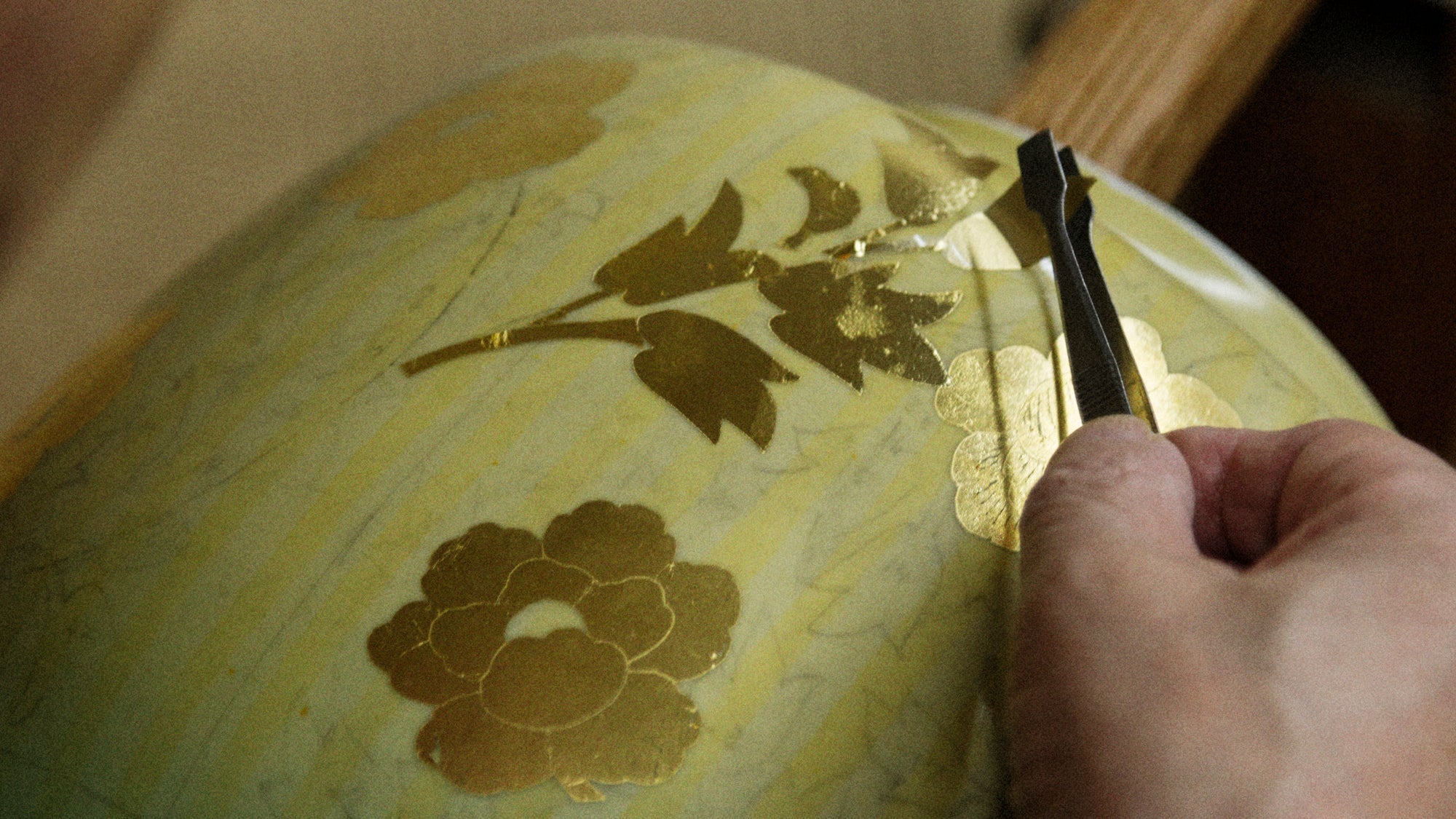
Beneath the Glaze: The Depth and Beauty of Kinzangama's Porcelain
Written by Team MUSUBI
The Kinzan Kiln, nestled in Takando, Komatsu City, Ishikawa Prefecture, stands as a testament to the enduring legacy of Kutani ware, a form of Japanese porcelain renowned for its intricate overglazed paintings. Established by Yoshita Shosaku in 1906, the kiln has been a beacon of traditional craftsmanship, specializing in the exquisite technique of yuri kinsai, or underglaze gold decoration. From the preparation of gold powder to the final glaze firing, our artisans uncover the layers of skill, patience, and artistry that define this exquisite form of Japanese craftsmanship.
tables of contents
The Artist: Yoshita Minori

The Kinzan Kiln particularly excels in yuri kinsai, a method involving glaze painting with gold, a signature style that has been refined and passed down through generations.
Yoshita Minori, the third-generation artisan at Kinzan Kiln, has mastered and even enhanced the yuri kinsai technique, earning recognition as an Important Intangible Cultural Property. This art form, characterized by its delicate and dense paintings, is a culmination of his perseverance and creativity.
The Process of Creating Yuri Kinsai



The artistry of yuri kinsai is further unveiled in its multi-step procedure:
Ink Sketching:
Artisans meticulously sketch detailed designs in ink on the glazed surface of the porcelain. These sketches act as precise guides for the next stage, where each part of the pattern is carefully numbered for gold leaf application.
Gold Leaf Application:
The gold leaf, known for its extreme thinness and delicacy, is precisely cut to align with the ink sketches. Using tweezers and funori glue, artisans then skillfully apply these gold pieces onto the porcelain, a process demanding exceptional finesse and dexterity.

Decoration and Carving:
The dried gold leaf is further adorned using techniques like kingaki "gold glaze drawing" and haribori "needle carving", adding depth and detail to the design.
Kingaki "Gold Glaze Drawing"


The piece undergoes multiple firings, including a final firing after a transparent glaze is applied, securing the gold leaf and enhancing its beauty.
The Artistic Genius of Yoshita Minori

"Not only does the transparent glaze prevent the gold from peeling off, but it also plays another role. By passing through the glass-like coating of the glaze, the strong metallic luster of gold is subdued, and the gold emits a refined and subtle shimmer, the aesthetic of yugen. This is the great charm of underglaze gold decoration."
Yugen, symbolizing the enchanting and mystical beauty of art, is highly revered by the Japanese aristocracy and holds significant importance in traditional waka poetry and Noh theater.
Yoshita Minori's expertise in yuri kinsai goes beyond simple decoration. He has revolutionized the use of gold leaf, employing it not merely as an embellishment but as a medium for portraying intricate natural motifs like flowers and birds. His unmatched skill in detailing fine aspects such as leaf veins and bird feathers with slender needles and knives is extraordinary.
Furthermore, Yoshita's innovative method of layering gold leaf results in various gold shades, ranging from transparent, subtle hues to rich, bold brilliance. This technique, when combined with the application of a transparent glaze, subtly diminishes the gold's inherent luster, yielding a refined shimmer that resonates with the Japanese aesthetic concept of yugen.
The Legacy and Future of Yuri Kinsai
Under Yoshita Minori's skilled guidance, yuri kinsai has transcended its role as mere decorative art, evolving into a symbol of nature's beauty and tranquility, expressed through the luminous use of gold. Each piece narrates a story, reflecting a blend of traditional techniques and innovative craftsmanship. The meticulous process, from gold powder creation to the final glaze firing, showcases the patience, skill, and creativity inherent in Kutani ware, resulting in porcelain works that embody elegance, refinement, and the enduring allure of Japanese artistry.







Leave a comment
This site is protected by hCaptcha and the hCaptcha Privacy Policy and Terms of Service apply.